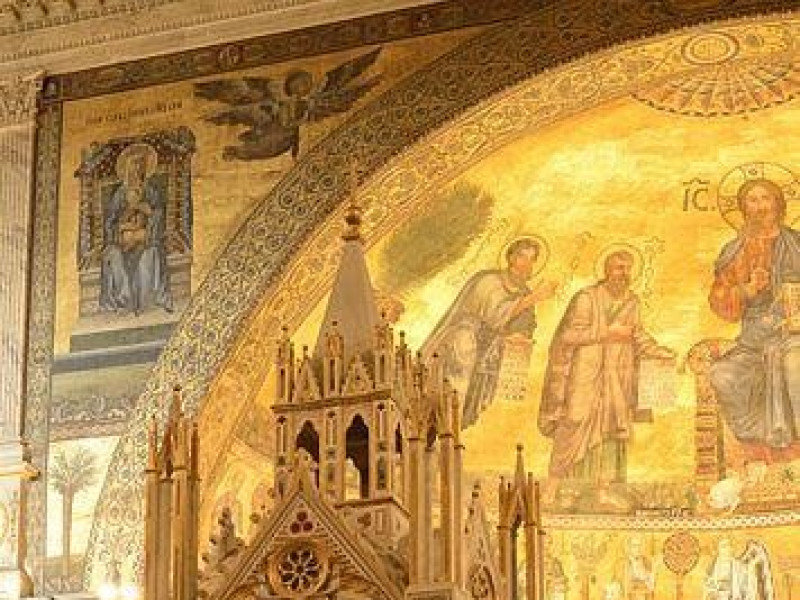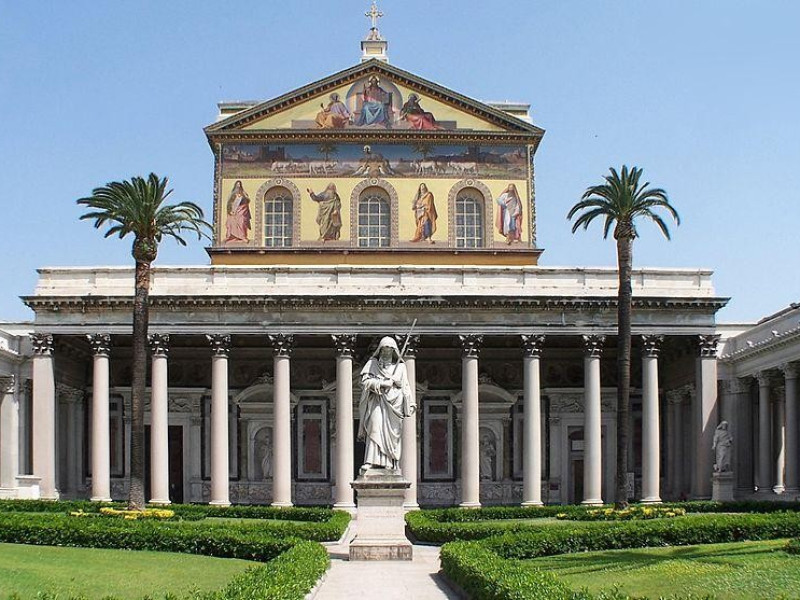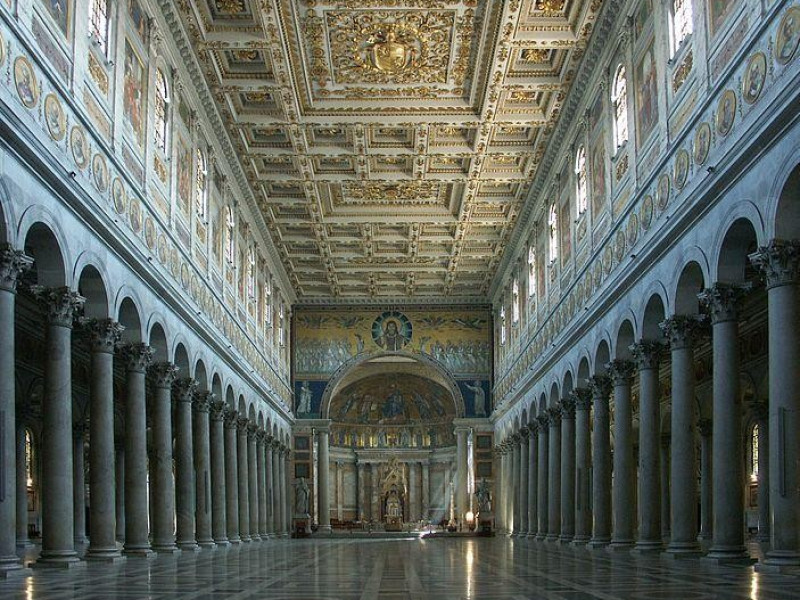Basilica di San Paolo Fuori le Mura
The Basilica of St. Paul Outside the Walls is one of the four papal basilicas of Rome, the second largest after St. Peter's in the Vatican, from 1980 is "World Heritage" UNESCO. It's located along the Via Ostiense, just outside the Aurelian walls (hence the name), in the place that tradition identifies as the burial of the Apostle Paul, under the papal altar, always a pilgrimage destination and the itinerary for the Jubilee, for the opening of the Holy Door. The emperor Constantine I, in 324, wanted a small church (of which it retains only the apse) in the burial place of Paul of Tarsus. The building, inadequate for the crowd of pilgrims, was completely rebuilt under the emperors Theodosius I, Gratian and Valentinian: building with five naves, with 80 columns and a portico. Subsequent additions, such as the triumphal arch, are attributable to the restorations made by Galla Placidia. Under the pontificate of Pope Gregory I the Basilica was profoundly changed: the floor level was raised to put the altar over the tomb of Paul. In the ninth century, the Basilica was surrounded by walls fortified with towers, a real village. Subsequently, there are added the bell tower and the ciborium by Arnolfo di Cambio. In 1600 was built the main altar; in 1724, the Chapel of the Crucifix (now the Blessed Sacrament) to accommodate the wooden work of Tino Camaino. In 1823 the Basilica was largely destroyed by fire: it saved the ciborium and some mosaics by Arnolfo, the apse, the triumphal arch and the cloister. The reconstruction was the work of Leo XII and the work was entrusted to Pasquale Belli. The current appearance is due, however, to the architect Luigi Poletti. The facade above the colonnade is decorated with nineteenth century mosaics; the portico is decorated with polychrome marble and is home to five access portals, works of art in precious stones. The transept resumes the frescoes on St. Paul's life, alternating with alabaster windows; on it there are four chapels (St. Stephen, Blessed Sacrament, St. Lawrence and St. Benedict). The marble ciborium has a Gothic kiosk supported by four columns corinziecon four cusps. The apse is decorated with fine mosaic of the Redeemer.
Info:
Every day from 7:00 a.m. to 6:30.
Free entrance.



